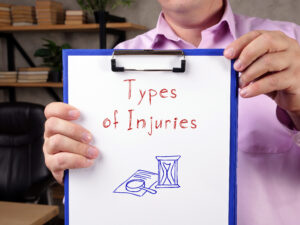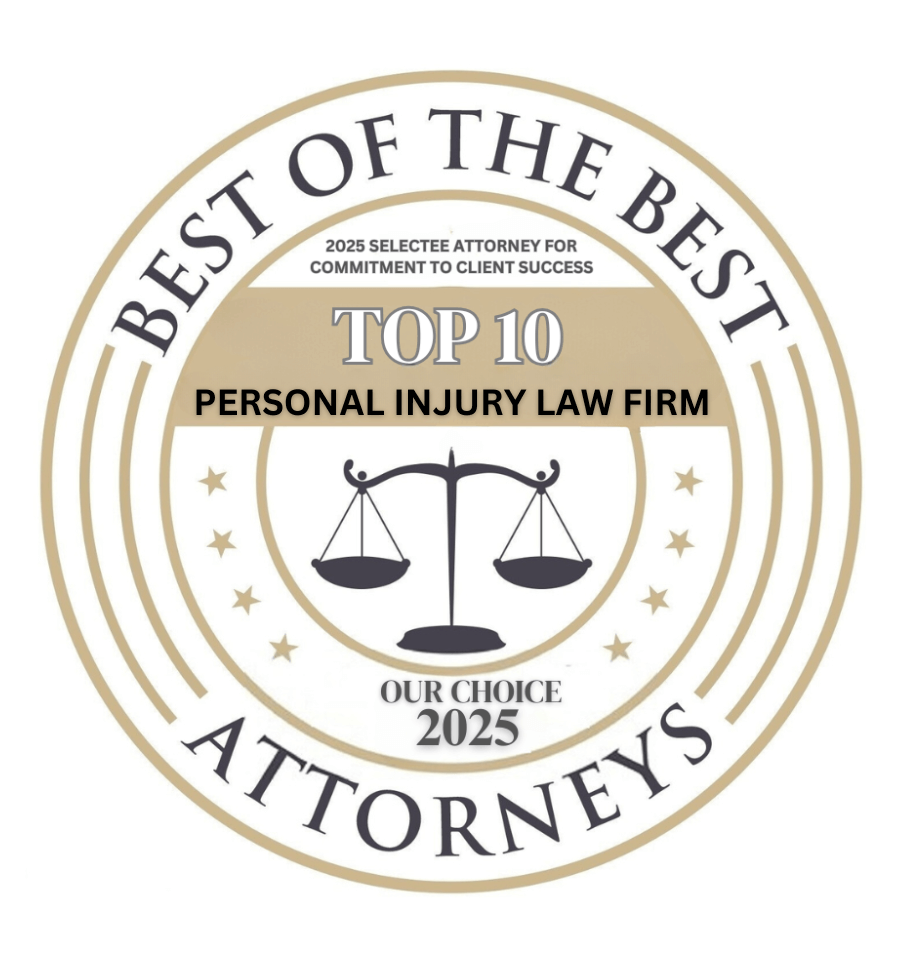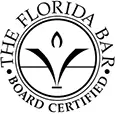What Qualifies as Personal Injury?
A personal injury case involving a motor vehicle accident arises when someone is harmed due to another party’s negligence – such as reckless driving or failing to obey traffic laws. Common injuries from these accidents can include whiplash, broken bones, head injuries, and spinal cord injuries, leading to high medical costs, emotional distress, pain, and suffering.
An experienced Everett personal injury lawyer can investigate the crash, gather evidence, negotiate with insurance companies, and advocate for fair compensation. They will ensure that victims understand their rights and provide legal guidance throughout the process, helping to lessen the stress of dealing with insurance claims and potential court proceedings.
Everett Personal Injury Guide
- Types of Personal Injuries That Result from Others’ Negligence
- Types of Motor Vehicle Accidents that Cause Injuries
- Successfully Proving a Personal Injury Case Involving a Motor Vehicle Crash
- Steps of Successfully Litigating a Motor Vehicle Accident Case in Court
- How Much Money Is a Personal Injury Case Worth?
- Call an Experienced Personal Injury Lawyer about Your Legal Matter Today
Types of Personal Injuries That Result from Others’ Negligence

Motor vehicle collisions often lead to a variety of personal injuries, primarily due to the negligence of other drivers. Some of the most common types of injuries that accident victims may suffer include:
- Soft Tissue Injuries – One of the most prevalent types of injuries is soft tissue damage, which includes strains, sprains, and contusions. Whiplash, a common result of rear-end collisions, falls into this category. Treatment typically involves physical therapy, pain management, and rest. In severe cases, doctors may recommend medications or even injections to alleviate pain and inflammation.
- Broken Bones – Fractures can occur in any part of the body during an accident, with the arms, legs, and ribs being particularly vulnerable. Treatment often requires immobilization with casts or splints, and in some instances, surgery may be necessary to realign broken bones. Rehabilitation through physical therapy is necessary for restoring strength and mobility.
- Head Injuries – Traumatic brain injuries (TBIs) are a serious concern in motor vehicle accidents. Concussions, which are a form of TBI, can result from sudden impacts. Symptoms may include headaches, dizziness, and confusion. Treatment can involve observation, rest, and gradual return to normal activities. More severe TBIs may require emergency care, including surgery and long-term rehabilitation.
- Spinal Cord Injuries – Injuries to the spinal cord can lead to paralysis or significant mobility issues. Depending on the severity, treatment may range from physical therapy to surgical interventions. Rehabilitation is essential to help victims regain as much function as possible and adapt to life changes.
- Psychological Injuries – The emotional aftermath of a motor vehicle accident can also be profound. Victims may experience anxiety, depression, or post-traumatic stress disorder (PTSD). Therapy and counseling can provide vital support in addressing these mental health challenges.
- Internal Injuries: Some accidents can cause internal injuries, such as organ damage or internal bleeding. These injuries require immediate medical attention and often necessitate surgical intervention.
If you suffered any of these injuries in an accident, a knowledgeable personal injury attorney can handle the legal components of your case while you focus on your recovery.
Types of Motor Vehicle Accidents that Cause Injuries
Motor vehicle accidents resulting from others’ negligence are unfortunately common and can lead to severe injuries. Here are some of the most common types of accidents resulting from negligence:
- Rear-end Collisions – These accidents happen when one vehicle crashes into the back of another. They often occur due to distracted driving, such as texting or talking on the phone. The sudden stop of the lead vehicle can catch the trailing driver off guard, leading to injuries like whiplash, back pain, and head trauma.
- Side-impact Collisions (T-bone Accidents) – These crashes occur when the front of one vehicle strikes the side of another, typically at intersections. Negligence, such as running a red light or failing to yield, is often the cause. Victims can suffer serious injuries, including broken bones and internal injuries, as the sides of vehicles offer less protection than the front and rear.
- Head-on Collisions – Head-on collisions are among the most dangerous types of accidents and happen when two vehicles collide frontally. They often result from drivers drifting into oncoming traffic due to distractions, intoxication, or drowsiness. Injuries from head-on collisions can be severe, including traumatic brain injuries and spinal cord damage.
- Rollovers – Rollovers can occur when a vehicle flips over onto its side or roof, often due to speeding or abrupt maneuvers. SUVs and trucks are particularly prone to rollovers due to their higher center of gravity. Injuries from these accidents can vary in severity and often involve head and neck trauma.
- Bicycle and Pedestrian Accidents – Negligent drivers who fail to watch for cyclists or pedestrians can cause serious accidents. These collisions often happen in urban areas where pedestrians are crossing streets or cyclists are sharing the road. Injuries sustained can be severe, including fractures and head injuries, due to the vulnerability of pedestrians and cyclists.
- Distracted Driving Accidents – These crashes can encompass a wide range of scenarios where drivers are not fully attentive to the road. Activities like eating, using a GPS, or engaging with passengers can lead to collisions. The injuries sustained in these accidents can vary widely, depending on the circumstances.
Successfully Proving a Personal Injury Case Involving a Motor Vehicle Crash
To successfully prove a personal injury case involving a motor vehicle collision, certain legal elements must be established. The following are the key components that need to be demonstrated:
- Duty of Care – The first element is establishing that the at-fault party (defendant) owed a duty of care to the injured party (plaintiff). In the context of driving, all motorists have a legal obligation to drive safely and follow traffic laws, which means driving attentively, obeying speed limits, and avoiding distractions.
- Breach of Duty – Once the duty of care is established, the next step is to prove that the defendant breached this duty, which can occur in various ways, such as speeding, running a red light, or driving under the influence. Evidence, such as traffic citations or witness testimonies, can help demonstrate this breach. For example, if a driver was texting while driving and caused an accident, this behavior clearly constitutes negligence.
- Causation – The plaintiff must also show that the defendant’s breach of duty directly caused the accident and the resulting injuries. This element is often established through evidence linking the negligent behavior to the accident. Medical records can also illustrate how the injuries sustained were a direct result of the collision. For instance, if a driver ran a stop sign and collided with another vehicle, causing injuries, there is a clear cause-and-effect relationship.
- Damages – Finally, the plaintiff must prove that they suffered actual damages as a result of the accident. Damages can include medical expenses, lost income, pain and suffering, and property damage. Documentation is key here; medical bills, pay stubs, and expert testimony about the effects of injuries on quality of life can all support the claim for damages.
Steps of Successfully Litigating a Motor Vehicle Accident Case in Court
Motor vehicle accident litigation involves several critical steps that begin after an accident occurs and can extend to a trial or alternative dispute resolution (ADR) proceeding. Here is a detailed overview of what happens during the litigation process:
- Investigation – Following a motor vehicle accident, the first step is investigating the circumstances surrounding the incident, which involves collecting evidence such as police reports, photographs of the scene, witness statements, and medical records. Attorneys often work with accident reconstruction experts who can clarify how the accident occurred and determine liability. This investigation is vital in building a strong case and establishing who was at fault.
- Consultation with a Lawyer – Victims typically consult with a personal injury attorney who regularly handles motor vehicle collisions. A lawyer reviews the case details, explains available legal options, and provides guidance on potential compensation. This initial consultation is essential for victims to understand their rights and the next steps.
- Filing a Complaint – If negotiations with the insurance company do not yield satisfactory results, the personal injury lawyer will file a complaint in the appropriate court. This legal document outlines the plaintiff’s claims, the facts of the case, and the damages sought. Once filed, the court serves the complaint on the defendant, officially notifying them of the lawsuit.
- Discovery Phase – After the complaint is filed, both parties enter the discovery phase. This phase involves exchanging information and evidence relevant to the case. Each side may request documents, conduct depositions (interviews under oath), and gather witness statements. Discovery can be lengthy, and it is important for both parties to prepare their arguments.
- Pre-trial Motions – Following discovery, either party may file pre-trial motions, which can include motions to dismiss the case or motions for summary judgment, where one party seeks to resolve the case without going to trial. If these motions are denied, the case will proceed to trial.
- Trial – If the case goes to trial, both parties present their evidence and arguments before a judge or jury, including witness testimony, expert opinions, and physical evidence. The trial process can take several days or weeks, depending on the complexity of the case. In the end, the judge or jury will deliberate and make a decision.
- Alternative Dispute Resolution – In some cases, parties may opt for ADR methods, such as mediation or arbitration, to resolve their disputes without going to trial. Mediation involves a neutral third party helping both sides reach a settlement, while arbitration is a more formal process where an arbitrator makes a binding decision.
Each step is essential in seeking justice and compensation for injuries sustained in the accident.
How Much Money Is a Personal Injury Case Worth?

The worth of a personal injury case involving a motor vehicle accident varies widely and depends on several factors, including the severity of the injuries, the extent of damages, and the circumstances surrounding the accident.
- Medical Expenses – One of the most significant components of compensation is medical expenses, which includes costs for hospital stays, surgeries, rehabilitation, medications, and ongoing therapy. Victims can recover both current and future medical costs, making documenting all medical treatments received following the accident important.
- Lost income – If injuries prevent a victim from working, they may recover lost earnings, including the income lost during recovery, as well as any potential future earnings if the injuries affect their ability to work long-term. Accurate documentation, such as pay stubs and employer statements, is essential in substantiating these claims.
- Pain and Suffering – Compensation for pain and suffering addresses the physical and emotional distress the accident caused. This compensation can include chronic pain, emotional trauma, anxiety, or depression. While there is no fixed formula for calculating pain and suffering, many attorneys use a multiplier method, where they multiply the total medical expenses by a certain number, often between 1.5 and 5, depending on the case’s severity.
- Property Damage – Victims can also claim compensation for damage to their vehicle or other property involved in the accident, including repair costs or the fair market value of a vehicle if it was totaled. Receipts and estimates from mechanics or auto shops help support these claims.
- Loss of Enjoyment of Life – If injuries significantly alter a victim’s lifestyle, they may be entitled to compensation for the loss of enjoyment of life, which can include the inability to participate in hobbies, social activities, or family events that were previously enjoyable.
- Punitive Damages – In cases where the defendant’s actions were particularly reckless or malicious, punitive damages may be awarded. These damages are intended to punish the wrongdoer and deter similar behavior in the future. However, they are less common and often depend on specific circumstances.
The total value of a personal injury case will depend on the unique details of each situation. Factors like jurisdiction, the strength of evidence, and the ability to negotiate with insurance companies also play significant roles. An experienced personal injury attorney can accurately assess an accident victim’s potential compensation and navigate their case effectively and efficiently.
Call an Experienced Personal Injury Lawyer about Your Legal Matter Today
If you sustained injuries in a motor vehicle crash, a skilled personal injury attorney can file a claim or lawsuit for you. They can also handle all negotiations with insurance company adjusters and litigate your case in court if necessary. Your attorney will aggressively pursue the compensation and justice you deserve for all of your accident-related losses.
Free Consultation
We Are Here For You 24/7
Reviews
– Elissa M.
“Really pleased with Boohoff Law! Received immediate responses when I had any questions. Treated amazingly by all staff … made this process a true breeze!”
– Caitlyn M.
– Brandy K.
Related Posts
Steps to Take After a Drunk Driver Hits Your Vehicle in Seattle
What Compensation Can You Claim for Severe Burn Injuries
What to Do After Being Injured in a Parking Lot Accident in Seattle
Recovery is personal.
We’re here for you.
You're better off with Boohoff.











The information on this website is for general information purposes only. Nothing on this site should be taken as legal advice for any individual case or situation. This information is not intended to create, and receipt or viewing does not constitute, an attorney-client relationship.
available 24/7
(877) 999-9999
